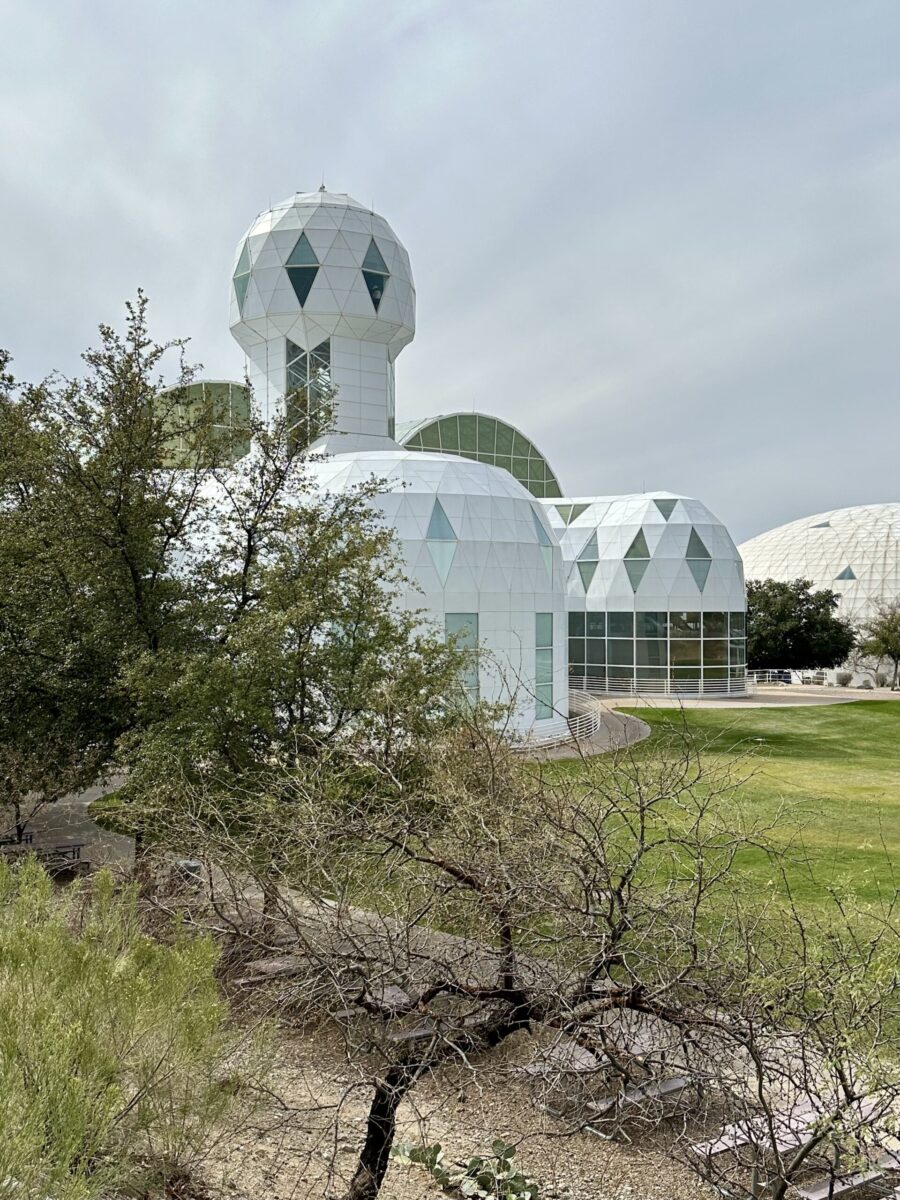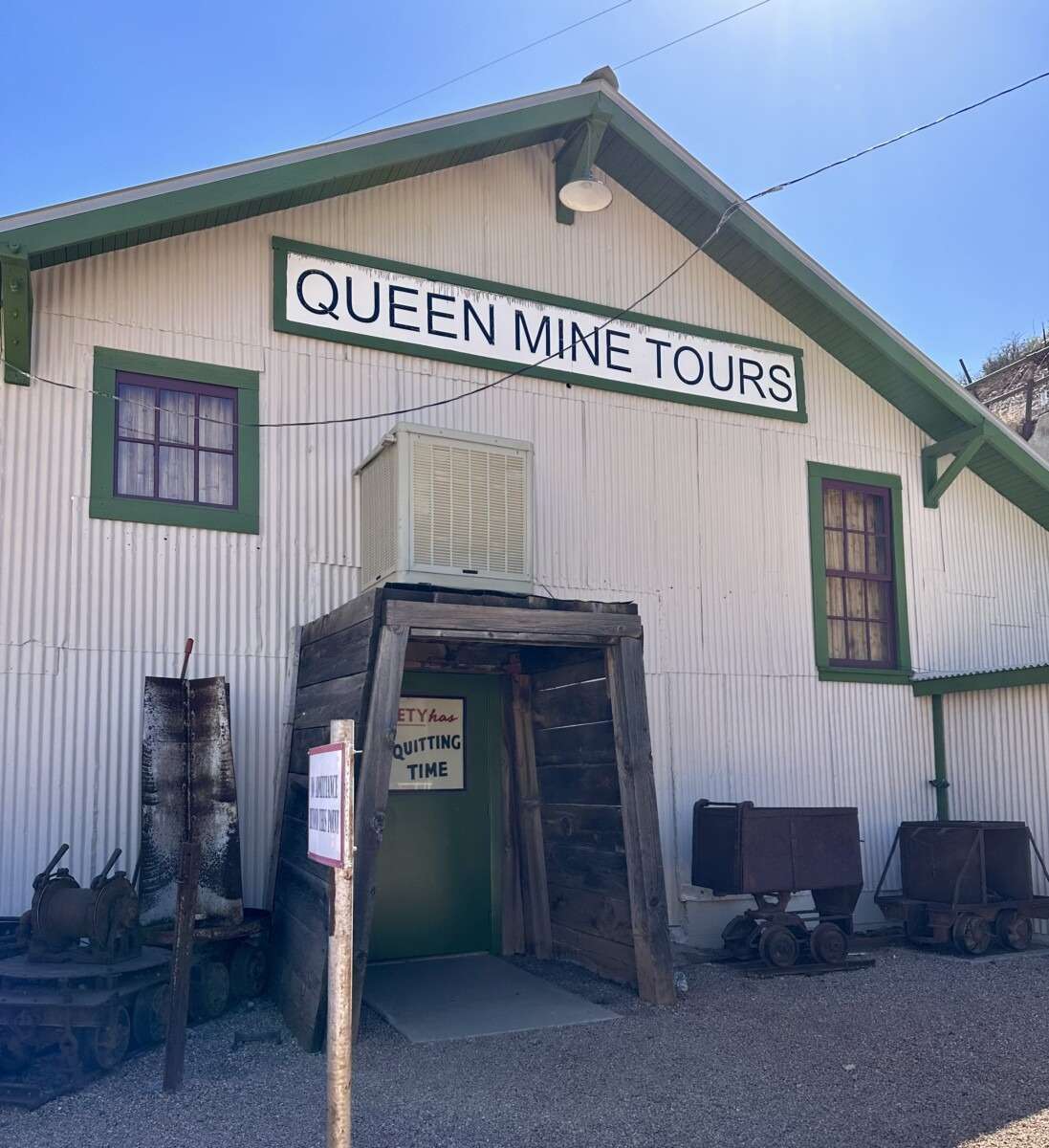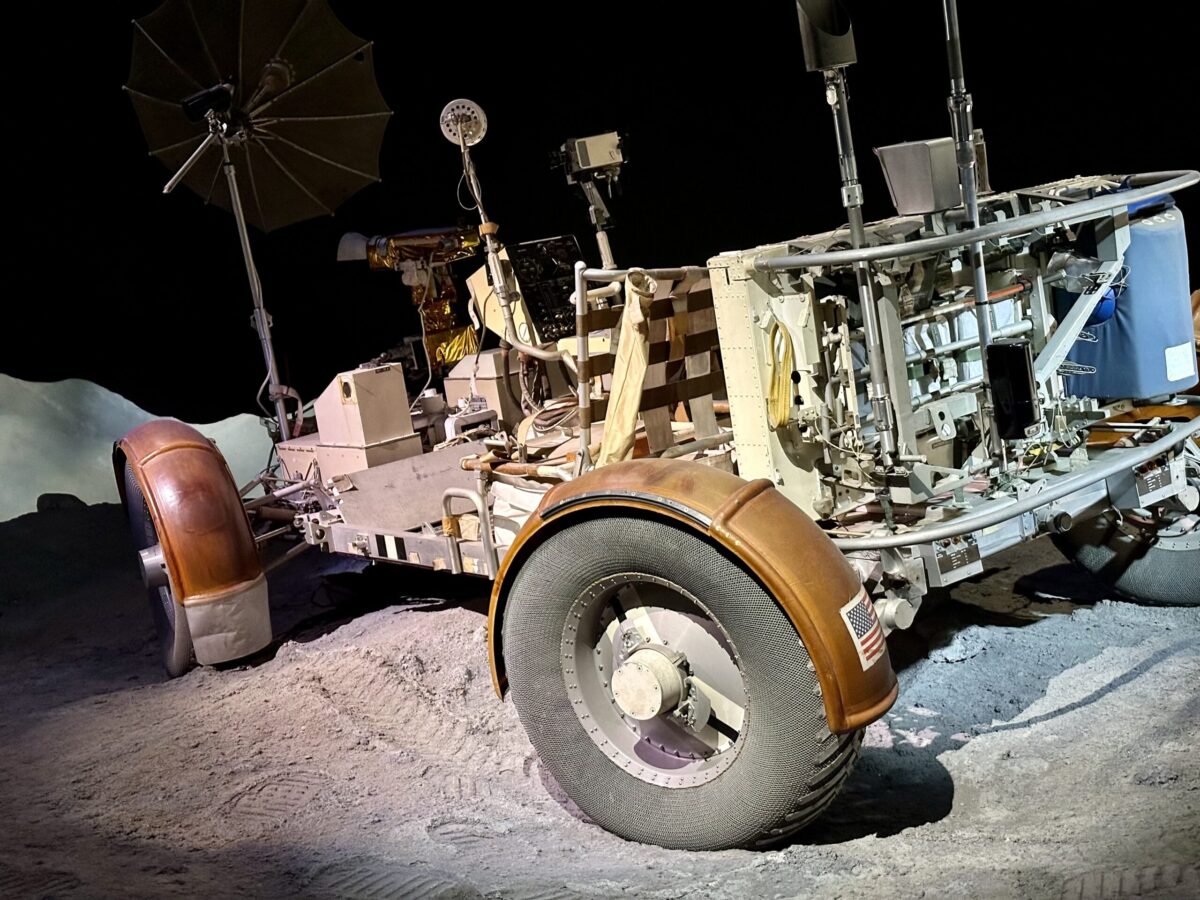Did you know that Thomas Edison, the inventor, and Henry Ford, the car guy, were friends? In fact, they were such close friends that Ford bought the house next door to Edison in Fort Myers, Florida, as his winter vacation home. Today, their winter homes and the property around them have become a museum open to the public for tours.


“In 1885 world-famous inventor Thomas Alva Edison (1847 -1931) first visited Fort Myers. In 1886 he built his winter home, “Seminole Lodge”…In 1916 industrialist Henry Ford (1863-1947) purchased the estate next door, “The Mangoes”, in order to spend more time with his good friend and mentor, Thomas Edison. These two prominent figures vacationed here until Edison’s death in 1931…” – NOTE: all quotes come directly from the Edison & Ford Winter Estates‘ information, unless otherwise noted.

While visiting my parents in Florida we drove down to Fort Myers to visit the Edison & Ford Winter Estates. It was worth the stop. Touring the homes and museum took a few hours, making it a good day trip if you are in the area.

“From his first visit in 1885 to his last stay in Fort Myers in 1931, Edison created a remarkable estate that included areas for his research, as well as family and social activities. His love of Florida included pastimes like fishing, boating, reading, trips to town, and exploring the tropical paradise that Edison affectionately referred to as his “Eden.”

There are a couple of options available for your tour – a self-guided tour while listening to an audio tour on an app you download to your phone, or a guided tour by historians offered throughout the day.
All tours begin at the central fountain, which stands in the middle of the property.

“The fountain was one of the primary landscape features of Seminole Lodge. Centrally located, it provided the Edison’s with a perfect vantage point to greet guests. Whether they arrived by boat or car, an allee led visitors straight to the fountain. In this photo, Charles and Mina Edison relax by the fountain around 1909. Before the Edison’s finished construction of their swimming pool in 1910, it provided a place where friends and family could stay cool on hot Florida days.”

From the central fountain you can see the remnants of Thomas Edison’s pier. It was the first structure he built when he purchased the property. The train didn’t travel this far south so all building materials were sent by boat. The water was too shallow for large boats to dock close to the property. At one point this pier was about 1,500 feet in length, almost 1/3 of a mile.

“The pier was originally called “the wharf.” It was used as a working area to off-load boats carrying materials and contents for the homes and laboratory, beginning in November 1885.”

“By the 1911 winter season the family and staff no longer had to travel downtown to the Royal Palm Hotel pool. Edison had a bathing pool built right on his own Estate.”


“When Edison created plans for his Florida retreat in 1885, water was a major concern to supplement the shallow well at the existing Caretaker’s House…In 1902 Edison began to create an extensive and formal water system for the property.”

“Just like our lawns today, Thomas Edison’s tropical gardens required a consistent supply of water to ensure they flourished. In addition to storing rainwater in large elevated wooden storage tanks, and later the cistern by the pool, Edison dug many wells on his property, including this 356 foot deep artesian well. Due to the unpleasant taste of its sulphur content, the water from this well was used only to water the gardens and fill the swimming pool-rainwater was used for drinking and cooking.”

“Throughout the history of Seminole Lodge, various equipment was used to supply or produce power. This motor generator and housing came to the property in 1928. A cable connected to the motor extended down to the riverbank to recharge Edison’s battery-powered boat; an electric launch named Reliance. It may have also lit the lights along the pier, as well as the lanterns hanging in the Summer House situated at the end of the pier.”

What?!? Edison had a battery-powered boat in 1928? And it was charged up using this little generator?


“When Edison bought this property in 1885 the center section of Caretaker’s House was the only building that existed on the property. It was used by Samuel Summerlin, the cattleman who owned the property before Edison, as a stopover during his cattle drives.” Today, this building appears to have become an art gallery.




Edison’s and Ford’s homes had an interesting set up for touring. All the doors were open and tall glass partitions were placed at each opening. The name of each room was etched on to the glass. This made it easy to see into each room throughout the house.


We were able to look into all the rooms on the first floor of Edison’s home, and several rooms in Ford’s home. We began our tour in Edison’s Library. Here are some highlights from the audio tour.
Edison was an avid reader and kept a collection of about 800 books here. The ceiling lighting fixture had one of the earliest electric light switches that Edison began producing.


There was a sign telling us about the second floor rooms though the stairway was closed off when we were there.



Even though temperatures were mild during the winter months when the Edisons were in Fort Myers, all the rooms have working fireplaces.

Also, note that the pictures were hung by the picture railing molding. According to our audio tour, this was a common architectural feature of the time.


The sitting room was a place for the family and guests to relax, chat, enjoy card games and music. Almost everyone in the Edison family played piano.

Many famous guests dined in this dining room, including President-elect Herbert Hoover, industrialist Harvey Firestone, writer John Burroughs, and automobile tycoon Henry Ford.



Edison kept many exotic pets at his home. “In 1904, Edison’s youngest son Theodore, age 6, returned to New Jersey from Fort Myers with five baby alligators which he kept in a tub outside their home. One afternoon while his mother Mina was serving tea to a group of ladies in the conservatory, Theodore decided to show his baby gators to his mother’s guests. As he entered the room Theodore was unable to contain all the “wrigglers” and ended up letting them slithe under the table, alarming the ladies.”
I can’t even imagine how the Edisons thought it was safe to let kids play with alligators, or keep them as pets.



We walked along a short path to Ford’s house. The picture below shows how close the two homes sit with a short picket fence sitting between the two. I was standing in front of Ford’s home looking back toward Edison’s home




“Distraught by Edison’s death in 1931, Ford eventually sold the estate to the Biggar family in 1945.” The garage on the property is called the Biggar Garage. It containes a small exhibit of a few cars and posters.






“The Ford family spent about two weeks each year in Fort Myers, usually timed around Edison’s birthday on February 11th. The rest of the year they spent at their home in Dearborn, Michigan.”
“Although most of the furnishings on display are not original, records indicate they are in the style of the Ford residences. The grandmother clock in the living room is understood to be original to the Ford Home in Fort Myers.”




“In the late 1920’s Ford added two bedroom and bath suites to the first floor as wings to the original building. These areas were necessary space for guests and staff such as Ford’s secretary, Frank Campsall, who accompanied him during several trips.



After touring the two homes we went to explore the rest of the property. Your ticket also lets you explore the gardens, Edison’s laboratory, and a Museum with items from both Edison and Ford. We began by walking through the gardens designed by Mina Edison.

“Mina Miller Edison (1865-1947) was the second wife of Thomas Edison. The couple was married in 1886, two years after the death of Edison’s first wife, Mary Stillwell Edison, in 1884. Mina was the daughter of another inventor, Lewis Miller of Akron, OH, and was beautiful, poised, and cultured. She was also 20 years younger than Edison. By the time they were married, when Mina was 19, Edison was well-known, and his businesses were thriving…” – ThomasEdison.org

Nearby was the Machine Shop used by Edison.


“In 1927, Thomas Edison, Henry Ford, and Harvey Firestone were concerned about America’s dependence on foreign rubber sources for its industrial enterprises. The three men formed the Edison Botanic Research Corporation (EBRC), and the following year, built this Laboratory, which became the project’s international headquarters.”





The museum on site had many intersting items and information from both Edison and Ford.
“In March 1916, “with Mr. Ford’s compliments,” local Ford agent Hill & Company presented a Model touring car to Thomas Edison. The value of the vehicle was $482.75.”

“When you think of Edison and Ford’s innovations, you may think of the light bulb or the assembly line. In reality, both innovators were involved in an impressively diverse array of ventures and projects.”



“Powered by thirty Edison storage batteries, this tractor was used for over 55 years at the Elgin Corrugated Box Company in Elgin, Illinois.”

It is hard to imagine someone riding on this box. Or that it had enough power to be used as a tractor.

“Edison received nine patents related to motion pictures. His 708th overall patent was issued on August 31, 1897 for a camera that projected moving film images onto a large screen or wall.”


“The phonograph was developed as a result of Thomas Edison’s work on two other inventions, the telegraph and the telephone.” – Library of Congress
“His phonograph was the first instance in history that sound could be recorded and played back, which gave him immediate worldwide recognition.”
We were able to listen to one of the phonographs on display. OMG! It was so loud and there was no way to adjust the volume. One of the museum historians demonstrated how people “put a sock in it” to muffle the sound. And now you know where that saying comes from. You’re welcome.



“A canny self-promoter, Henry Ford kept a contingent of photographers on hand to document such experiences…Decked out in three-piece suits, these “Vagabonds” commanded convoys stocked with custom-made tents and gourmet kitchens – logistical marvels made possible by the services of tire tycoon Harvey Firestone…”




Joel and I always say that we learn so much more from our travels than we ever did when we were in school. Sometimes just being in a place lets you experience the history so much more vividly. This was one of those places. You can just imagine these two friends hanging out on the porch and talking for hours while looking out at the Caloosahatchee River.






Never knew about the Ford/Edison relationship. Very interesting and enlightening. Thanks !!
We thought so too.
Guten Morgen!
Thank you for those interesting pictures of a bygone era between two great American businessmen and friends…one an innovator and the other one an industrialist; They are the pioneers of so many devices and commercial products that are used worldwide and enjoyed by everyone in the past, present and on to the future!!!